Banning books may seem like an easy way to protect kids from subjects parents don't want them to know about, but as history shows, censorship is never the answer. Instead of banning books, teach kids about why censorship is harmful and how they can be discerning readers. These books about censorship, media literacy and disinformation (aka "FAKE NEWS!") tackle a tough but essential topic.
Understanding propaganda, book banning, and how to spot fake news and conspiracy theories equips students with the necessary tools for positive civic engagement and to be good stewards of democracy, and freedom of thought and expression.
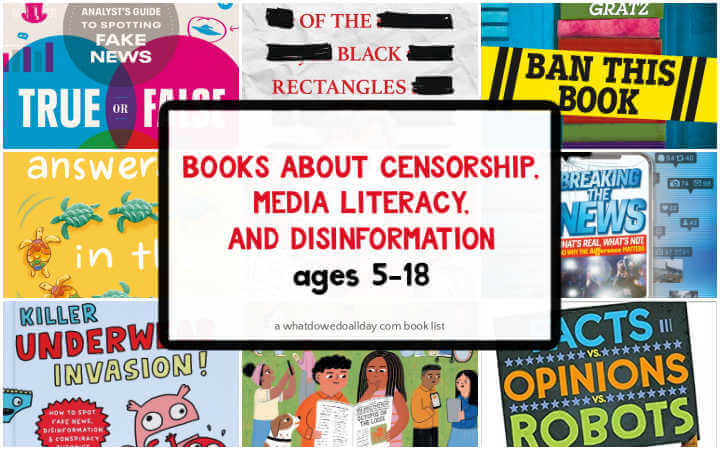
This book list features both fiction and nonfiction titles for kids ages 5 and up, as well as teens who want to learn more about the subject.
Note: this list contains Amazon and Bookshop affiliate links. Purchases made through these links may earn a commission for this blog. Bookshop also supports independent bookstores.
Fiction
These fiction selections are primarily middle grade novels, with one exception. For kids listening to picture books at read aloud time, try some of the books on our list of Picture Books about Perspective and Observation to hone their skills of discernment.
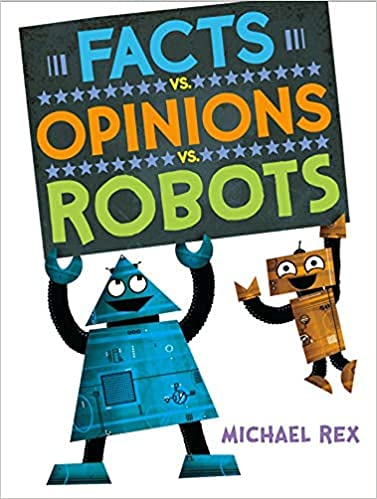
FACTS VS OPINIONS VS ROBOTS by Michael Rex
This excellent, amusing picture book is a great one to share with young kids who may still be blissfully unaware of the concepts of fake news, conspiracy theories and internet propaganda. Throughout the book, robots ask readers to consider whether certain statements are facts or opinions. This robot is green. Fact or opinion? Green is a good color for a robot. Fact or opinion? More complex examples ask readers to think about why they might have come to that conclusion. Kids come away with some good tips on how to discern what is a provable fact and what is an opinion-laden preference. Ages 5 and up.
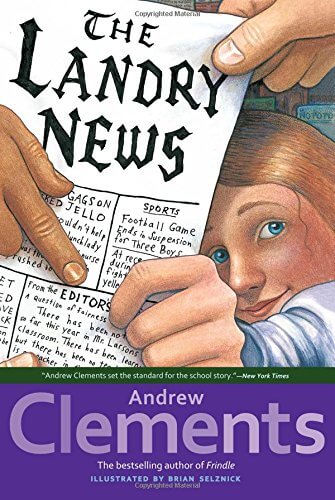
THE LANDRY NEWS by Andrew Clements
Fifth grader, Cara Landry, writes an article about her teacher, which prompts him to improve and become more engaged with his students. Mr. Larson then encourages his students to start a newspaper to sharpen their investigative journalism skills. An article in this new student-run paper about divorce causes a stir that leads to the principal censoring the paper. However, the censorship only increases interest in the paper and students' interest in free speech issues. Ages 8 and up.
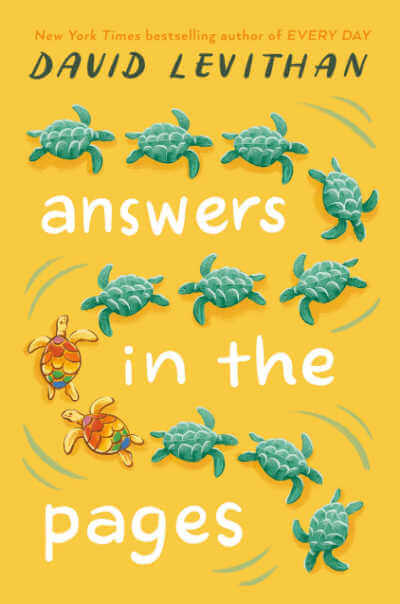
ANSWERS IN THE PAGES by David Levithan
Levithan's structures this important novel around three connecting stories. In the first, Donovan's 5th grade teacher assigns the class an adventure novel. When Donovan's mom briefly looks at the book, she interprets a short passage to mean that two of the main characters are gay and begins a campaign to get the book banned. The second narrative is excerpts from the book the 5th graders are supposed to read. The third story focuses on two 5th graders who work together on a book project about Harriet the Spy. Levithan cleverly connects the three stories, but we don't find out how until the end of the book. I won't give it away, but it's a fun surprise. Ages 9 and up.
MORE: LGBTQIA+ Books for Tweens
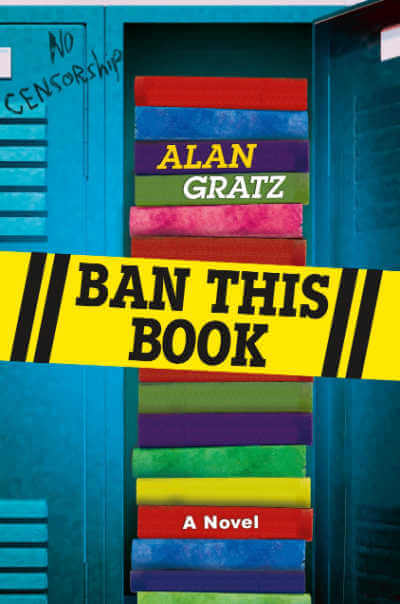
BAN THIS BOOK by Alan Gratz
This book contains the pleasure of the literary equivalent of "name dropping." Kids who are voracious readers will enjoy recognizing many of their favorite titles in the pages, and others will want to run right out and read all the titles that the parents in the book wanted to ban. Amy Anne loves reading but when her favorite book, From the Mixed-Up Files of Mrs. Basil E. Frankweiler is banned from the school library, she is flabbergasted. The efforts of a small group of parents to ban books from the library sparks student activism and Amy Anne turns her locker into the B.B.L.L., the Banned Books Lending Library. This is not just a tale of the perils of censorship, but one in which Amy Anne learns to speak up for herself. Gratz explains in his endnote that all the titles mentioned have been banned or challenged in some school libraries across the country. Ages 8 and up.
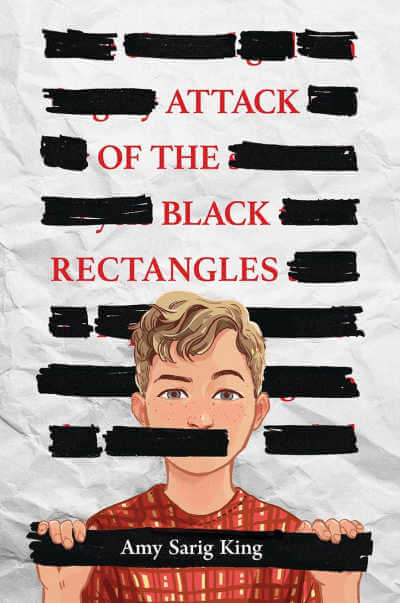
ATTACK OF THE BLACK RECTANGLES by Amy Sarig King
It would be easy for a book about censorship to devolve into a simple moralistic screed, but King is much too talented an author to let that happen. Mac's 6th grade class is reading Jane Yolen's, The Devil's Arithmetic, about the Holocaust, but each classroom copy has numerous words or phrases covered by black rectangles. Mac gets a full copy and discovers that the missing words are hardly inappropriate and informs his peers. His teacher, however, supports the censorship, as well as other restrictions on the students like dress codes or bans on junk food. The students begin their campaign to challenge the school administration, and along the way learn about themselves and others. Ages 9 and up.
MORE: Children's picture books and middle grade novels about the Holocaust
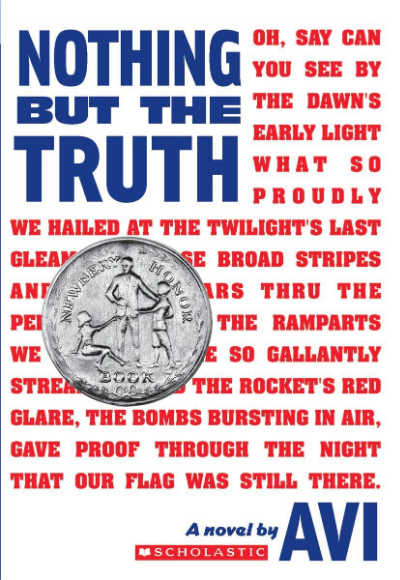
NOTHING BUT THE TRUTH by Avi
I couldn't put this book down! In an effort to get transferred away from a particular teacher's class, Phillip causes a class disruption. But the chain of events that he sets in motion has the community examining what it means to be truthful, patriotic and respectful of others. The narrative is "documentary style," with dialogue, interviews, letters and diary entries telling the story from different perspectives, making for a unique reading experience. Ages 10 and up.
For fiction YA books that tackle censorship and propaganda, take a look at The Sledding Hill by Chris Crutcher, Suggested Reading by Dave Connis, (both of which I have yet to read) and of course, Ray Bradbury's classic, Farenheit 451 (which of course, I have!).
MORE: Banned Books Your Kids Should Read
Nonfiction
These nonfiction books about media literacy and disinformation aim to teach kids about free speech and give them practical tools to spot fake news and how to combat it.

KILLER UNDERWEAR INVASION by Elise Gravel
Sometimes a serious subject needs a lighthearted take, and Gravel delivers. Using outlandishly comical news stories (like killer underwear)Gravel introduces kids to the concepts of disinformation and conspiracy theories as well as teaching them how to spot fake news using logic, common sense and an evaluation of sources. Using quirky illustrations and humorous examples, Killer Underwear Invasion is a great first book about the importance of media literacy. Because Gravel uses wacky headlines, parents will have a hard time calling it out as partisan. Ages 6 and up.
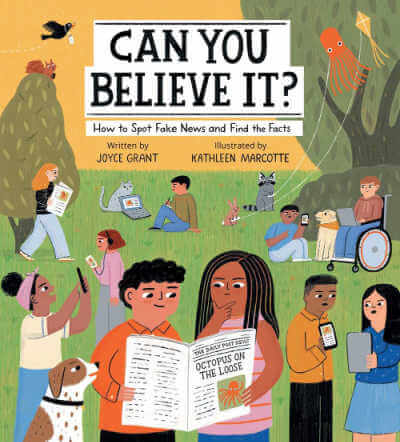
CAN YOU BELIEVE IT?: HOW TO SPOT FAKE NEWS AND FIND THE FACTS by Joyce Grant, illustrated by Kathleen Marcotte
Grant's book aims to teach kids media literacy so they are able to separate fact from fiction. Six chapters take kids through a fairly comprehensive process whereby they learn about responsible journalism, research techniques, locating quality sources, the perils of errors in the internet age and more. Page layouts, with informative sidebars and illustrations, will appeal to young readers. Ages 8 and up.
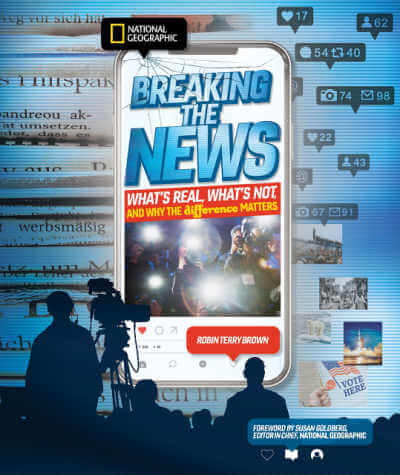
BREAKING THE NEWS: WHAT'S REAL, WHAT'S NOT AND WHY THE DIFFERENCE MATTERS by Robin Brown
Published by National Geographic, this volume aims to illuminate journalism, the dissemination of news through the media and how kids can be proactive in spotting bias and propaganda. With loads of illustrations, photographs, sidebars, call out boxes filled with digestible and sometimes amusing facts, examples from ancient to contemporary history as well as tips to make smart choices, the book is easy to read and full of an incredible amount of information. Highly recommended! Ages 10 and up.
MORE: Civics and Government Books for Middle School
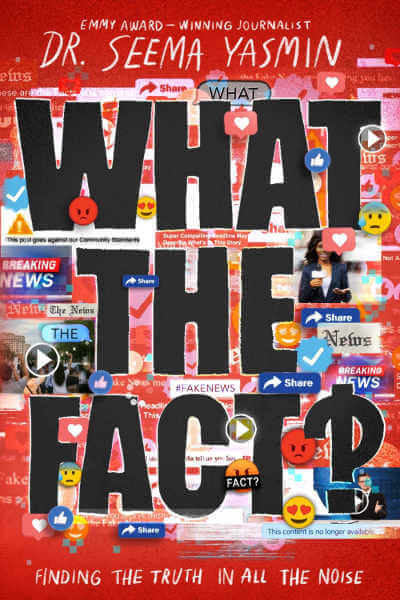
WHAT THE FACT?: FINDING TRUTH IN ALL THE NOISE by Seema Yasmin
This terrific book dives, using real world examples from history and the present, into all kinds of misinformation, disinformation and malinformation. It is essential reading for teens. Dr. Yasmin explains how news is constructed and how it spread. She tackles big subjects like the myth of objectivity, social media, how we can spot information manipulation, and offers practical advice. It is a huge topic, but this is a highly readable and necessary book. Ages 12 and up.

TRUE OR FALSE: A CIA ANALYST'S GUIDE TO SPOTTING FAKE NEWS by Cindy L. Otis
I really liked how the first half of this book focuses on the spread of disinformation and propaganda by authority figures. Chapters focus on historical examples like the portrayal of Marie Antoinette as "the destroyer of France," how Ramses II of Egypt tried to convince his people he'd won on the battlefield, and "yellow journalism." The second half of the book is practical. Otis shares techniques for spotting fake news, understanding bias and navigating the 24 hour news cycle. Excellent. Ages 12 and up.



Leave a Reply